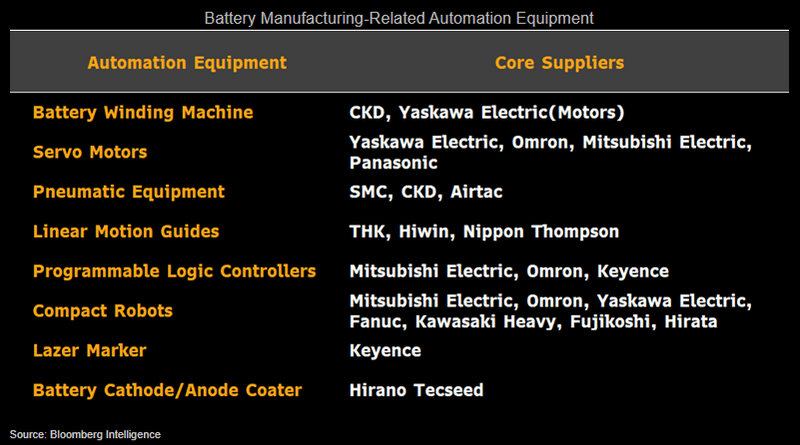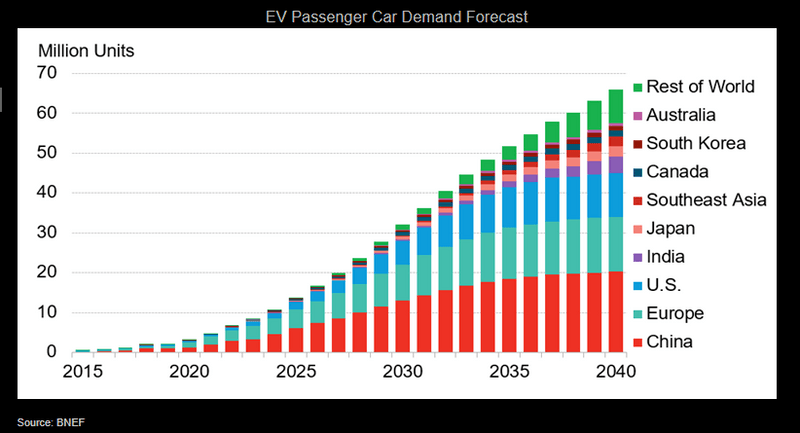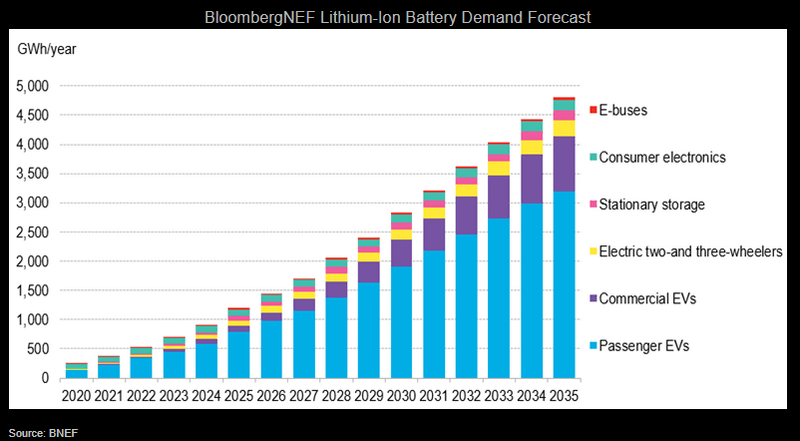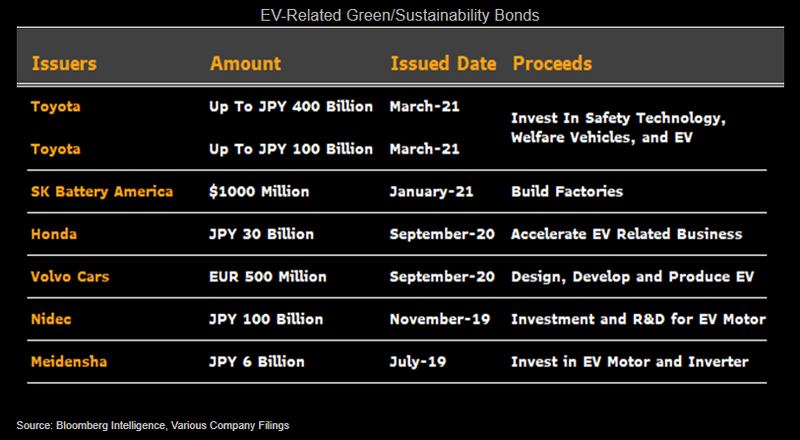Factory automation equipment sales to rise on EV battery boost
This analysis is by Bloomberg Intelligence Senior Analyst Takeshi Kitaura and Bloomberg Intelligence Senior Analyst Tatsuo Yoshida. It appeared first on the Bloomberg Terminal.
Factory automation companies are set to capture a portion of the 17 trillion yen in equipment capital spending through 2035 for battery factories supplying passenger EVs and 25.7 trillion yen for batteries used in electronics, energy storage and other vehicles. This capex may rise on government incentives and increasing green bond issuance.
Battery plants need motors, robots, special equipment
Japanese factory automation (FA) equipment may increase sales on rising capital investment in battery plants, as manufacturing high-quality batteries requires high-performance equipment. These range from motors, programmable logic controllers, pneumatic equipment and small robots (including SCARA, or selective-compliance-assembly-robot-arm machines), to more specialized equipment, such as winding machines, electrode coaters and related parts. Also, the traceability of batteries from a recycling and safety perspective suggests a need for laser markers and other quality control equipment.
FA equipment makers poised to benefit from battery plant capex include Keyence, SMC, Yaskawa Electric, Mitsubishi Electric, Omron, CKD, THK, Fanuc and Kawasaki Heavy Industries (KHI).

Need to supply battery, parts for 66 million EVs by 2040
China, Europe, the U.S., Korea and Japan will lead global sales of passenger electric vehicles (EVs) to 66 million units by 2040, accounting for 68% of world car sales, BloombergNEF (BNEF) estimates. This will boost demand for auto body parts common to traditional gasoline-powered vehicles and also newer parts such as EV batteries, drive motors and inverters.
In China, the world’s largest car market, passenger EV sales are set to grow 410% during 2020-25, and 9.3% on average a year in 2035-40, according to BNEF. We expect similar growth in Japan, the U.S. and Europe through 2040, while annual sales in other countries could rise by 30%. FA machinery makers will need to develop sales strategies over the short term to suit developed countries, expanding over the long term to emerging markets.

Large-scale battery capex plans likely through 2035
We calculate battery plant capex of 17 trillion yen for passenger EVs, and 25.7 trillion yen for other applications through 2035. This is based on BNEF’s battery demand outlook and various media reports citing battery plant capex of 5.8 billion yen per GWh. These include land and buildings, but if about 50% is earmarked for equipment, it translates to 8.5 trillion yen and 12.9 trillion yen (567 billion yen and 860 billion yen a year). Lithium-ion battery demand for passenger EVs will reach 3,199 GWh a year by 2035, rising to 4,801 GWh when including commercial EVs and other uses, according to BNEF. While not all equipment will be factory automated, the calculations represent 5.7% and 8.6%, respectively, of a 10 trillion yen FA equipment market. Spending amounts may be higher if governments target faster adoption.

Tailwind from financial firms’ green bonds
Robust EV funding is supported by green and sustainability bonds. Toyota announced in March its would issue up to 500 billion yen of Woven Planet Bonds for the development and manufacture of safety technologies, assistive vehicles for mobility-challenged people, EVs and related parts. Automaker peers Honda and Volvo Car Group have issued green bonds to raise capital for electric-vehicle R&D, as have parts makers SK Innovation, Nidec and Meidensha. Japanese issuance of green, social, and sustainability bonds rose 76% year-over-year to 2 trillion yen in 2020, according to the Japan Securities Dealers Association.
Financial firms are aggressively pushing sustainable finance, with Japan’s three megabanks setting targets for loans and issuance. Green bonds and finance enables banks and brokerages to raise their ESG profile.

TDK, Panasonic, Nidec ramping up capacity
TDK may strengthen expansion of its household battery system, electric motorcycle and industrial battery businesses via its joint venture with China’s CATL, the world largest EV battery maker. The rechargeable battery cell joint venture, with a registered capital of about 77.2 billion yen, aims to combine CATL’s strength in automotive battery cell with TDK’s expertise in smartphone battery cell and pack technology.
Panasonic’s existing EV battery joint venture with Toyota may help meet rapidly rising battery demand from Toyota and third parties through its ongoing production capacity ramp up in Japan and Dalian, China through 2030. As booming EV sales will likely boost demand for motors, Nidec plans to expand its motor production capacity for electric vehicles and motorcycles.
